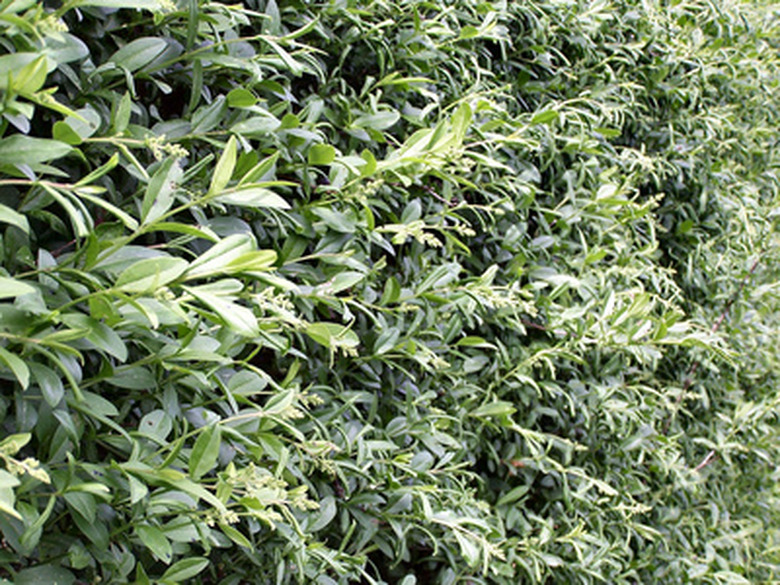Evergreen Hedge Plants In Washington
Evergreens are preferred as hedge plants because of their year-round privacy screening, but before you choose, decide how tall a hedge you'd like to have, whether you want to shear it twice a year or not and whether you'd prefer a fine-textured hedge or one with larger leaves. Try to choose plants that grow several feet taller than the hedge height you desire to avoid constant pruning. Larger plants fill in faster but need more work later on.
Low Hedges: Under 4 Feet
One of the best shrubs for a low hedge is the fine-textured box honeysuckle (Lonicera nitida). Unsheared, it will grow to 6 feet tall but is easily kept lower. Fragrant white flowers bloom in late spring or early summer. Baggesen's gold, a variety with gold foliage if given sun, is an option.
- Evergreens are preferred as hedge plants because of their year-round privacy screening, but before you choose, decide how tall a hedge you'd like to have, whether you want to shear it twice a year or not and whether you'd prefer a fine-textured hedge or one with larger leaves.
Another possibility is the Japanese holly (Ilex crenata). It is naturally dense, 3 to 4 feet high and has small round leaves that look much like boxwood leaves.
In eastern Washington, use the wintergreen boxwood (Buxus microphylla koreana). It also has small leaves and grows about 2 1/2 feet high, but can take heavy shearing.
The emerald gaiety wintercreeper (Euonymus fortunei) is also hardy enough to take eastern Washington winters. It is a naturally sprawling small shrub to 3 feet tall.
Medium Hedges: 4 to 10 Feet
Gardeners in western Washington have quite a few options for medium-size hedges. One of the most popular is the English laurel (Prunus laurocerasus), but it has large leaves that are difficult to shear well and will grow 3 to 4 feet a year. Keep it for a hedge 15 feet tall or more, or use it as an attractive evergreen tree.
- Another possibility is the Japanese holly (Ilex crenata).
- One of the most popular is the English laurel (Prunus laurocerasus), but it has large leaves that are difficult to shear well and will grow 3 to 4 feet a year.
A better bet is its relative, the Portugal laurel (P. lusitanica). Naturally a 15-foot tree, it grows slowly enough to be kept at medium height with occasional pruning. The leaves are about 3 inches long, dark green and attractive.
For shade, try Aucuba japonica, with 4- to 5-inch leaves often variegated with yellow. It is easy to care for, somewhat drought tolerant and bears red berries if you have both male and female plants and they are left unpruned.
For eastern Washington, choose arborvitae, one of the varieties of Thuja. They are fine-textured conifers that come in both dwarf and tall varieties that take shearing well.
- A better bet is its relative, the Portugal laurel (P. lusitanica).
- It is easy to care for, somewhat drought tolerant and bears red berries if you have both male and female plants and they are left unpruned.
Tall Hedges: 8 to 12 Feet
In western Washington, the strawberry tree (Arbutus unedo) is an excellent choice for a tall hedge or screen, being both drought tolerant and beautiful, with medium-sized dark green leaves, white heatherlike flowers in fall and red fruit. The russet colored bark is also a plus if you're leaving it unsheared.
Leyland cypress (x Cupressocyparis leylandii) is an attractive, fast-growing conifer often used for high hedges, but because it's normal height is close to 60 feet you'll have to keep after it. It does take shearing well.
In eastern Washington, look for the taller varieties of Thuja and for very tall hedges or screens, consider the Douglas fir (Pseudotsuga menziesii). Though a popular timber tree, it does take shearing well.
